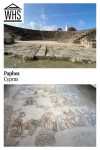Paphos
By Tom Henty
What is Paphos?
The Paphos UNESCO site includes various archeological sites across two main areas of Cyprus: Kato in Paphos, and Kouklia village.
- The main sites in the Kato area are the Tombs of the Kings, ‘Pafos Castle’, and Nea Pafos, which is an ancient coastal city, with original Roman-era mosaics and relics still in good condition.
- Kouklia is home to the Temple of Aphrodite, and Palaepaphos (Old Paphos).
Disclosure: This article contains affiliate links. Making a purchase through an affiliate link will mean a small commission for this website. This will not affect your price.
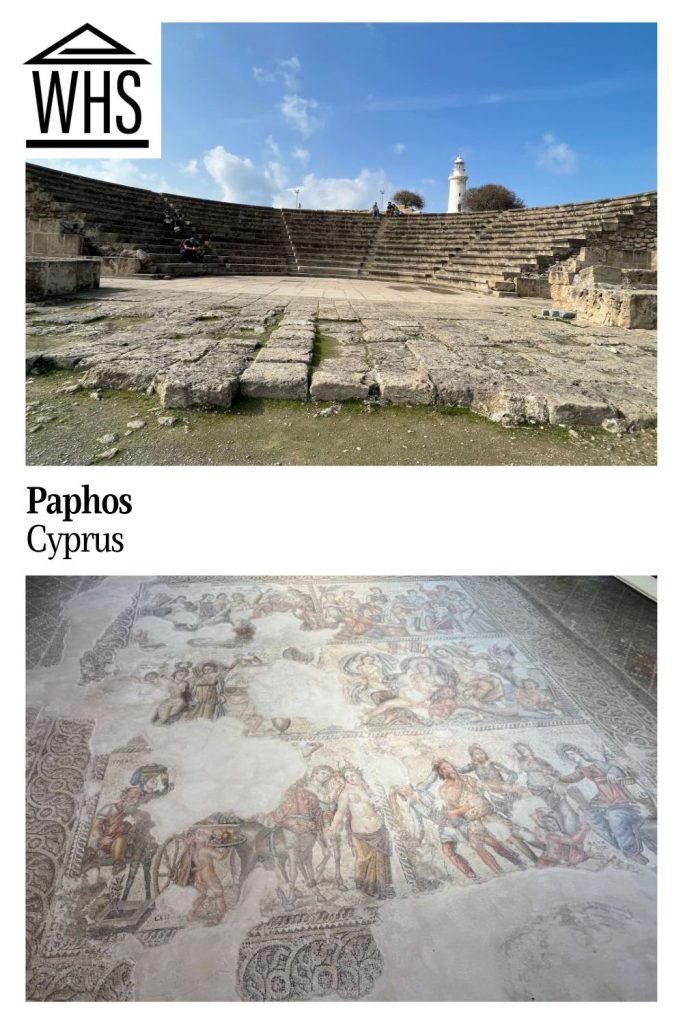
Tombs, mosaics and mediaeval castles are some of the notable parts of the site. The remains include archaeological finds from civilisations as far back as the Neolithic period, though most of what can be visited today dates to the Roman period.
Why is Paphos a UNESCO World Heritage site?
Aphrodite (Venus) is globally fabled and has been the topic for many poets, writers and artists throughout history. Aphrodite’s legend was born in Cyprus, just along the coast from the site. This was where the cult of Venus began; Venus “became widely recognized and celebrated as a symbol of love and beauty,” according to UNESCO.
Paphos was made a UNESCO site partly because of the extreme age of the site, some of which goes back to the 6th millenium BC. The Temple of Aphrodite (12th century BC) “bears witness to one of the oldest Mycenaean settlements.” The Nea Paphos mosaics range across centuries and are fine specimens.
The condition of relics across Nea and Tombs of the Kings varies, so UNESCO wants to protect them for future generations to continue to gain insights from them.
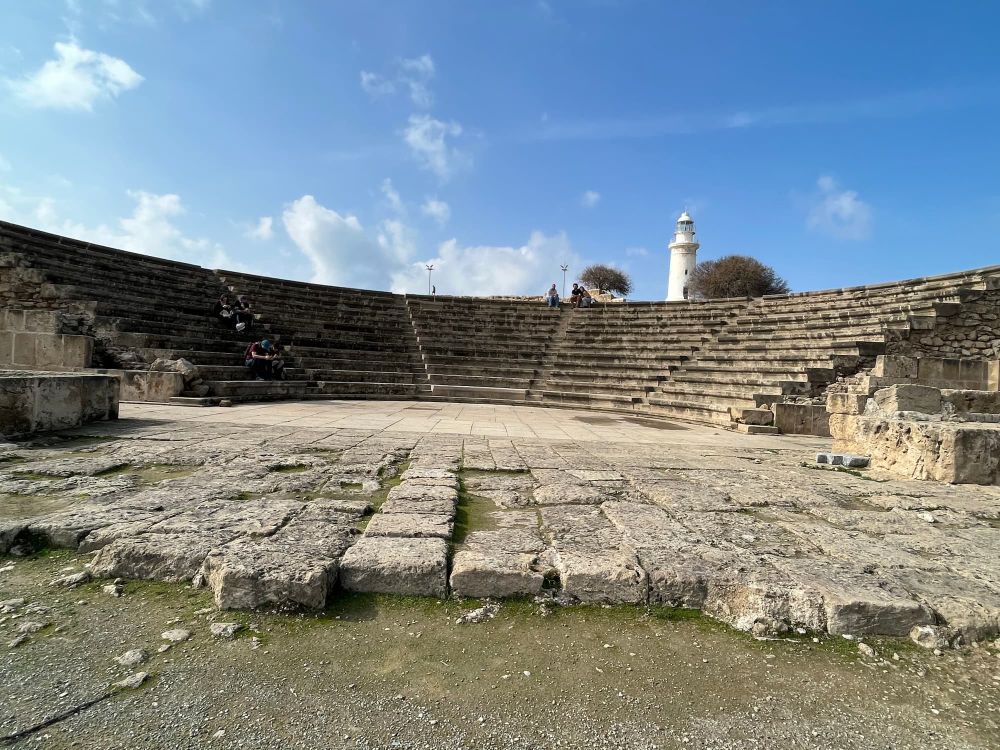
What can you expect on a visit to Paphos?
The UNESCO-listed area includes large sites, so visitors have the opportunity to wander the grounds of Nea and the Tombs of the Kings at their own pace. Although there are information boards throughout, an unguided tour is the best way to activate one’s imagination.
At Nea Pafos, some of the mosaics and landmarks are in remarkable condition, considering their age. They are in what remains of four Roman villas. There are other ruins of the Roman town as well: an agora, a basilica, an odeon and – a popular spot for visitors to sit and observe the great historic presence – the Hellenistic Roman Theatre.
Paphos Lighthouse (1888), by the way, is another feature near the Nea site, and is located very close to the theatre. I noticed several couples enjoying a picnic on the steps of the theatre after they captured their selfies at the lighthouse.
Just along the coastline is the Tombs of the Kings, a necropolis, with tombs cut out of rock, some of which include columns and frescos. You are free to wander and explore the seven excavated tombs while enjoying the beautiful backdrop of the Mediterranean Sea. The tombs date back to the 4th century BC and all differ from one another in design and condition.
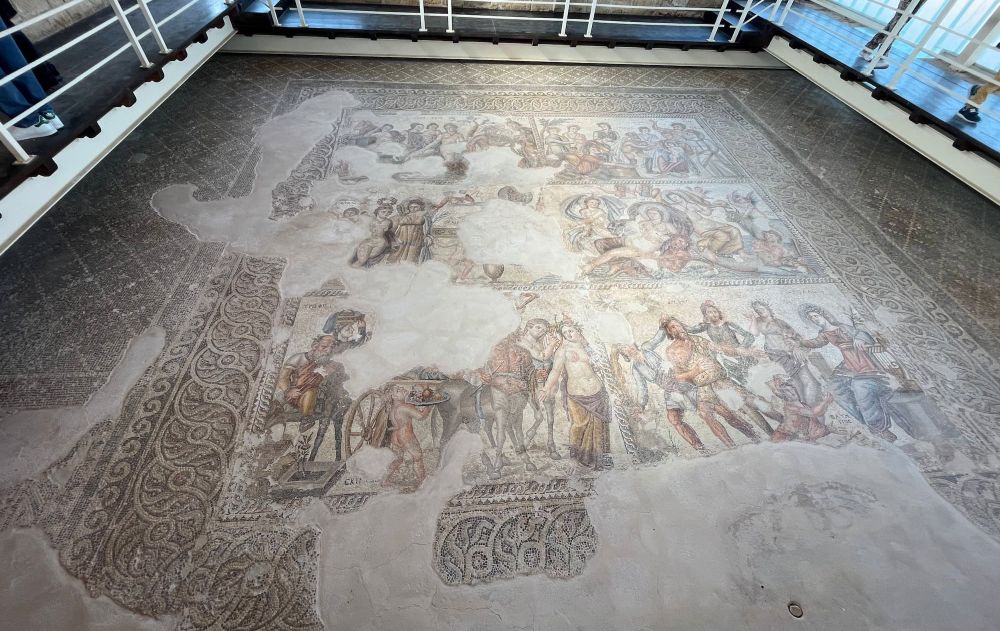
Is Paphos worth visiting?
Paphos is steeped in interesting history spread across the city, which makes filling your Paphos travel itinerary easy. Combining the history of Cyprus with the warm climate and beautiful nature makes for a great trip. Most archaeological sites are within walking distance of Paphos Old Town, and the public bus network is really cheap and efficient to make traversing the city a pleasurable experience.
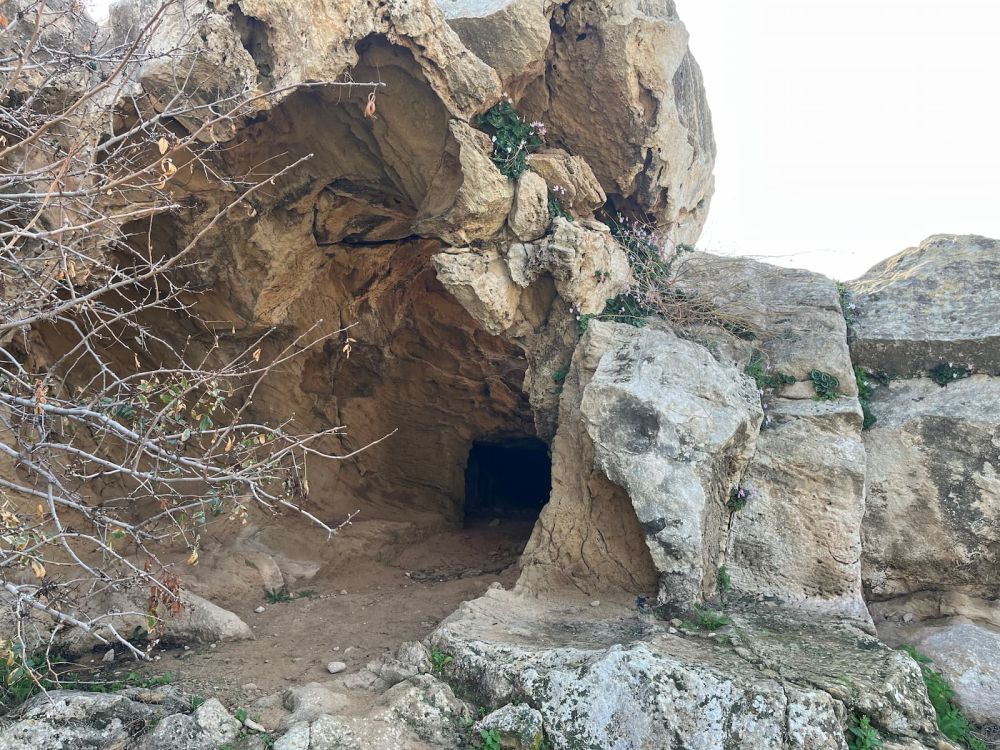
What sorts of travelers would like Paphos?
This is a family destination, so you can expect to see whole families enjoying the archaeological sites, especially in the peak summer months. Couples, solo travellers, and elderly travelers also commonly visit, so it really is a destination to suit every need. Anyone interested in Ancient Roman history would find it especially interesting.
Book your accommodations in Paphos or nearby. Zoom out on the map below to see lots of possibilities all over the country:
Tips for visiting Paphos
Your entrance ticket includes use of the free audio guide at each tomb. You have to scan the QR code you’ll find at the tomb’s entrance. You will then hear the ancient stories behind each tomb as you walk around them. I found the commentary to be very detailed and a unique aspect to the site.
Cyprus can reach very high temperatures in the summer, so it is advisable to plan your day of exploring around this. An early morning visit is recommended to Nea and Tombs of the Kings, as there is a lot of walking around the sites involved.
Transport in Paphos: The UNESCO sites are popular with tourists, so the transport network between the different sites is efficient and well organised. The cheapest way to traverse Paphos is via bus, with each journey costing €2 each way. If you plan on visiting multiple UNESCO sites in one day, you should purchase a day bus ticket for €6.50.
Tickets for the Paphos archeological sites: You can purchase a ticket for €8.50 which covers all of the UNESCO sites across Paphos. The antiquities department of Cyprus has stated that the ticket can only be used for one day, so it makes sense if you are visiting multiple sites in one day. The tickets for the individual sites are also very reasonable.
Official tours are a great way of exploring Paphos. You will benefit from detailed knowledge about the UNESCO sites from the locals. The tours also include other popular spots in Paphos, so you can combine history with the natural beauty of Cyprus.
Other highlights that you should add to your Paphos itinerary include:
- Coral Bay beach, for a relaxed beach day,
- Edro III shipwreck, a cargo ship that stranded here in 2011,
- Paphos Harbour, with its pleasant promenade, and
- Aphrodite’s Rock, a picturesque sea stack.
Also think about seeing some of the other UNESCO sites in Cyprus.
Where is Paphos?
Paphos is on the southwest coast of Cyprus. You can reach it directly by air, as it has its own airport. Approximately 100 flights a week arrive in Paphos.
If you have flown into Cyprus at another airport, or arrive by ship, then catching the bus is the best way to reach Paphos. The buses across Cyprus are budget friendly, comfortable and efficient. The capital city, Nicosia, is around two hours away by bus.
If you prefer more flexibility, rent a car to drive around the country.
If you are based in Northern Cyprus and want to visit Paphos, you will have to cross the border. An up-to-date passport is required to do so.
For more information about Paphos UNESCO site, including the different sites’ opening hours and admission costs, see its official website.
Have you been to Paphos? If so, do you have any additional information or advice about this UNESCO World Heritage site? Please add your comments below!

